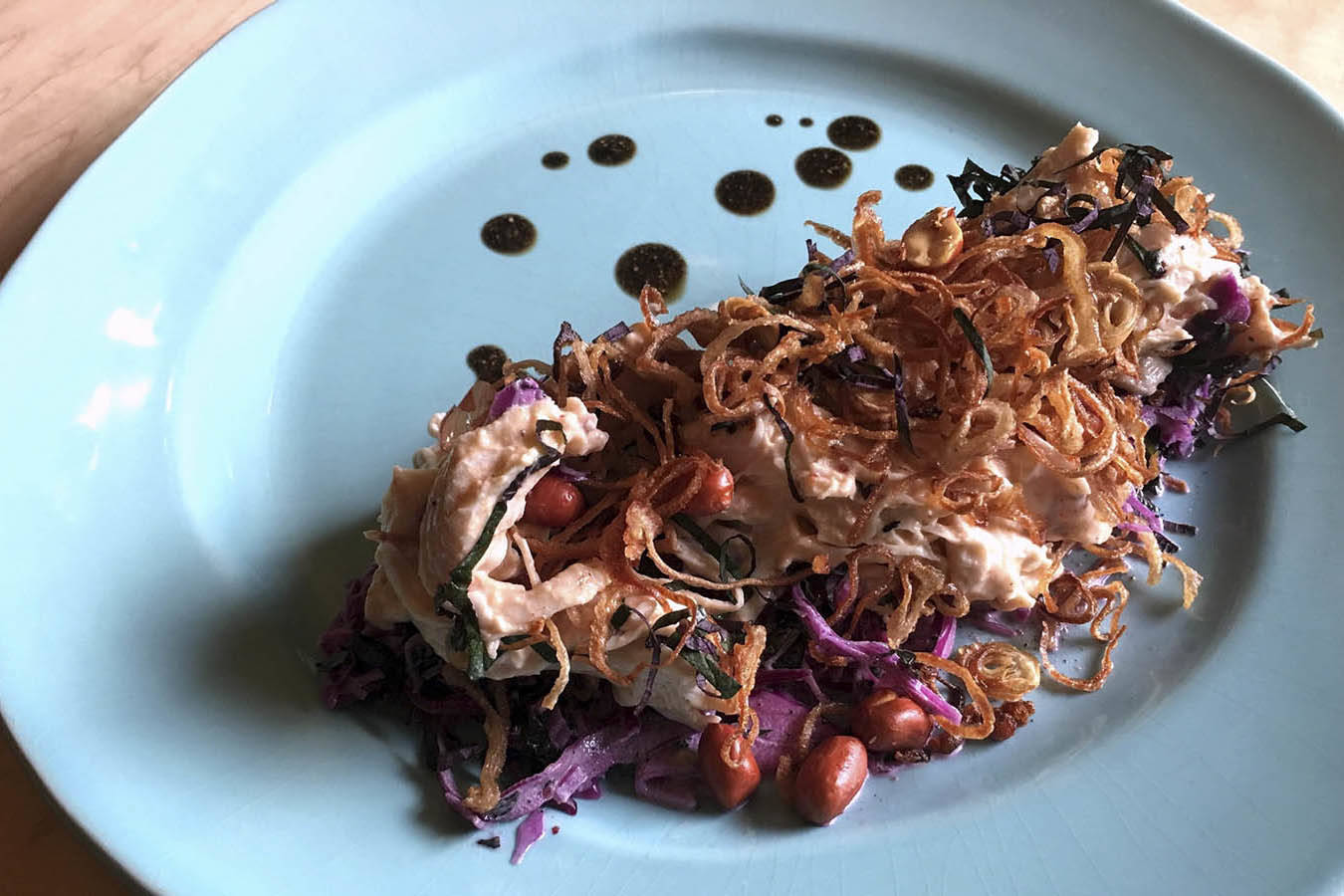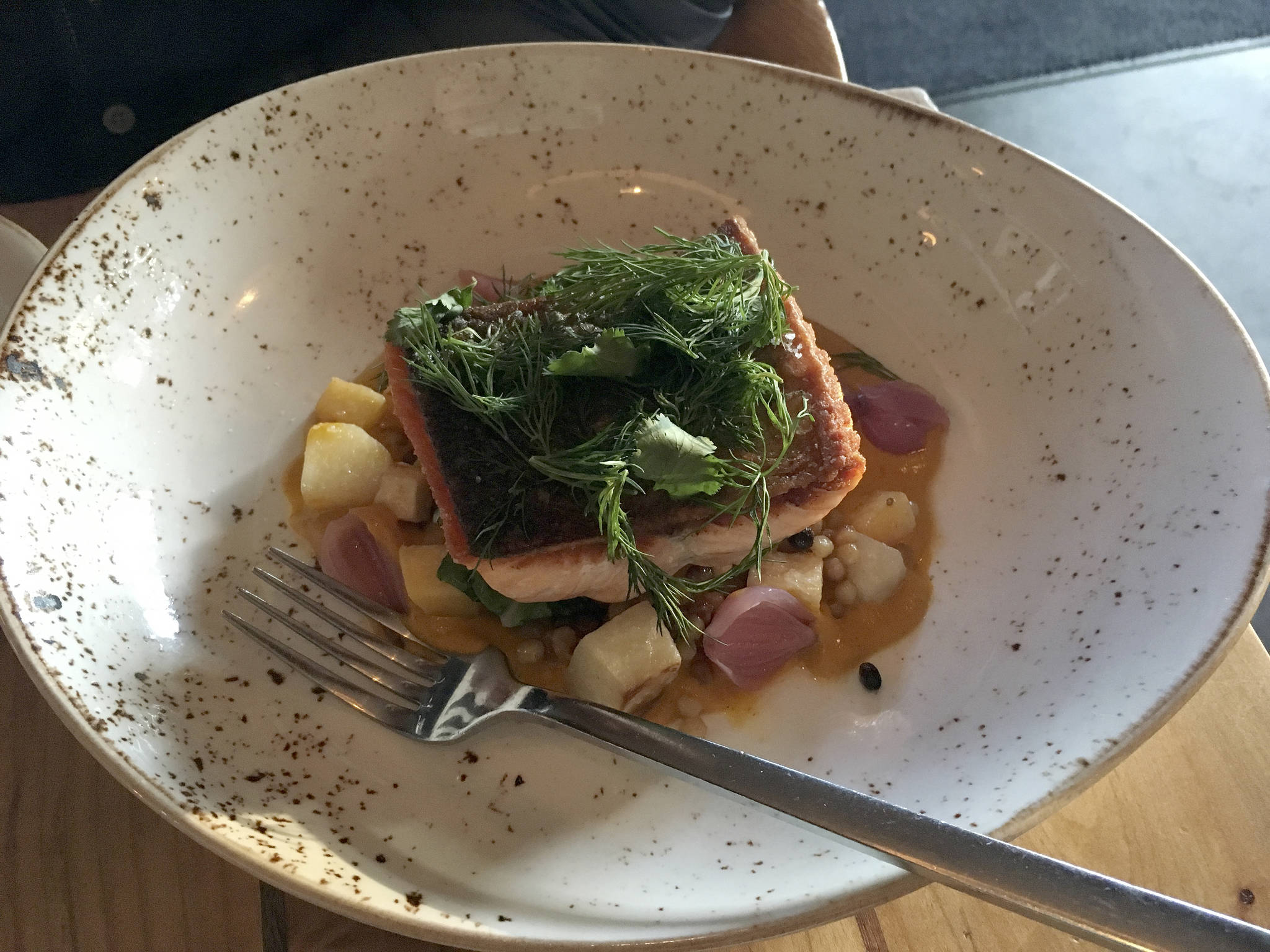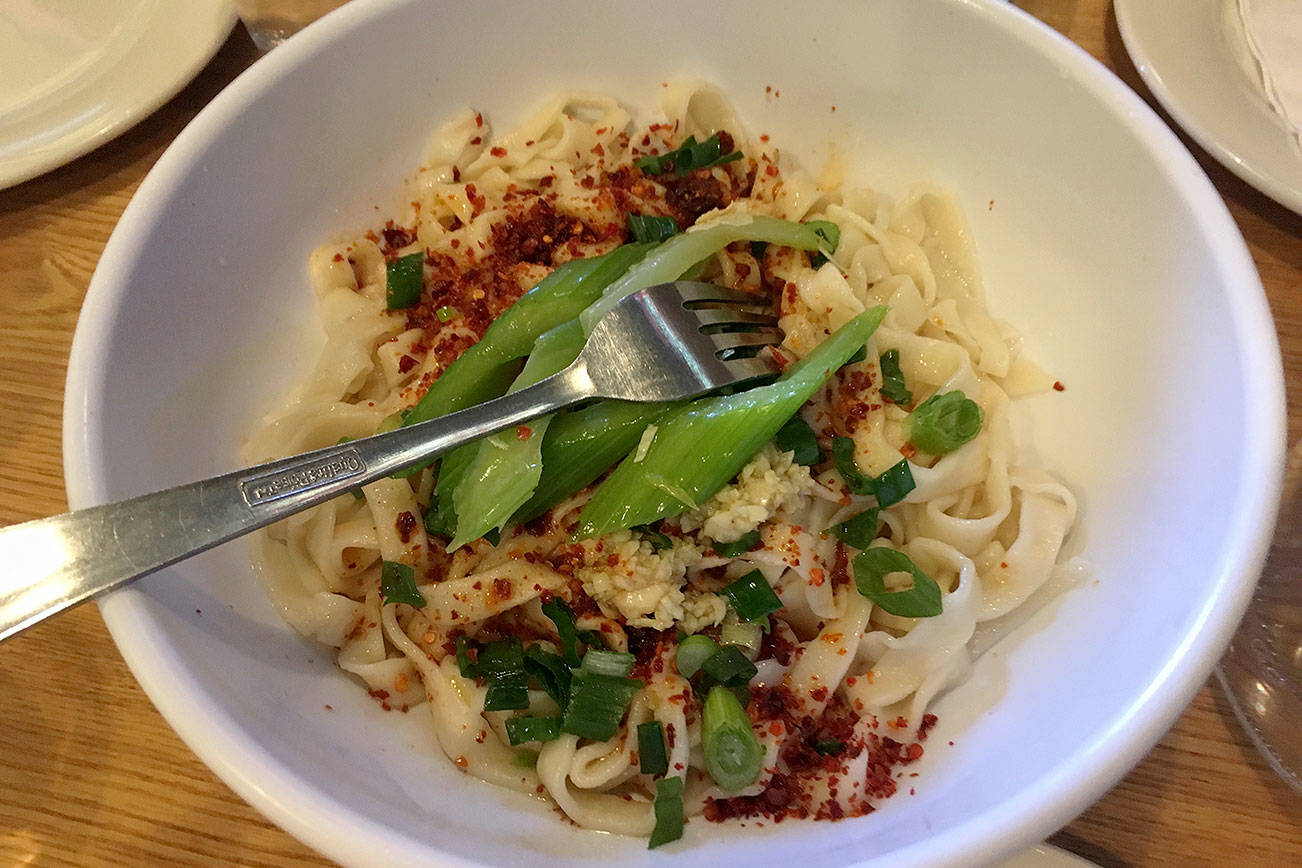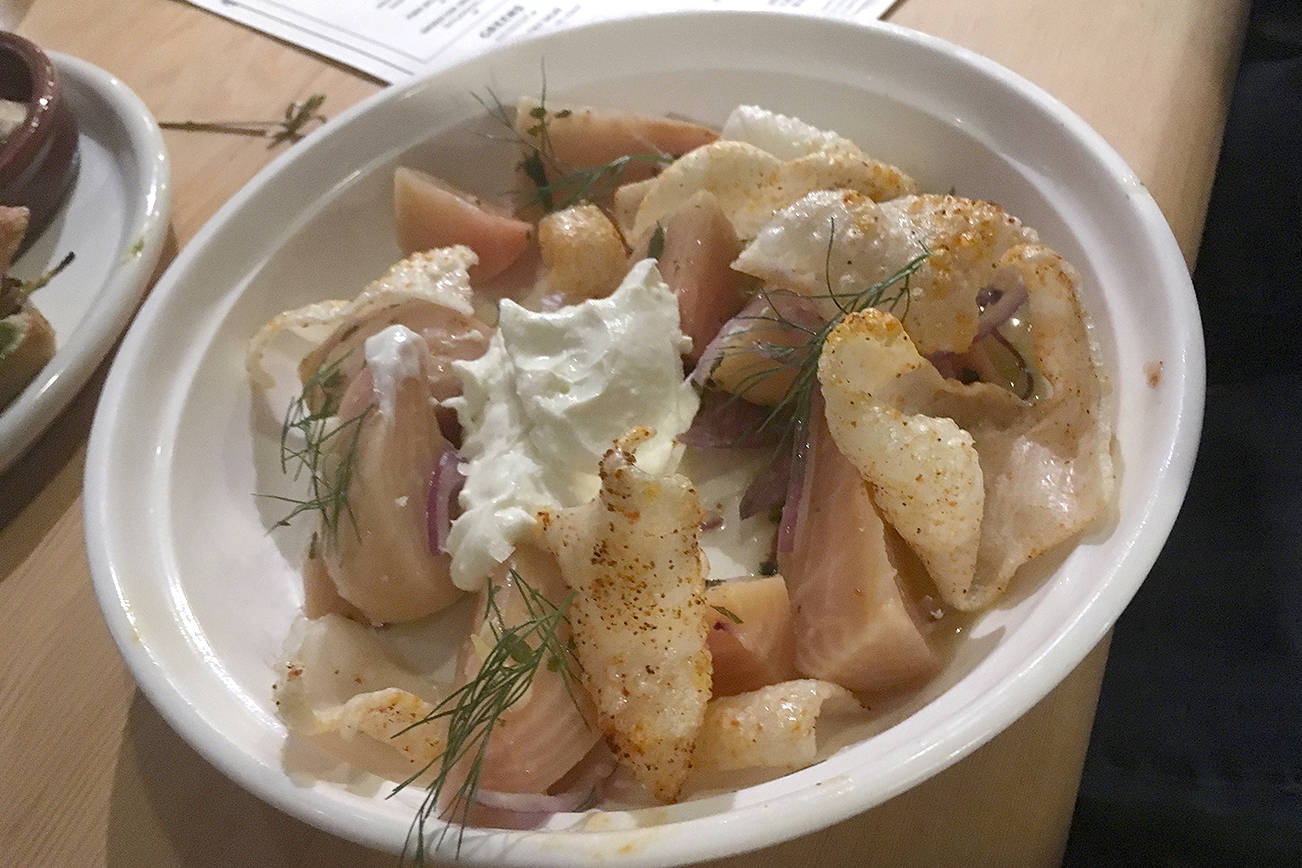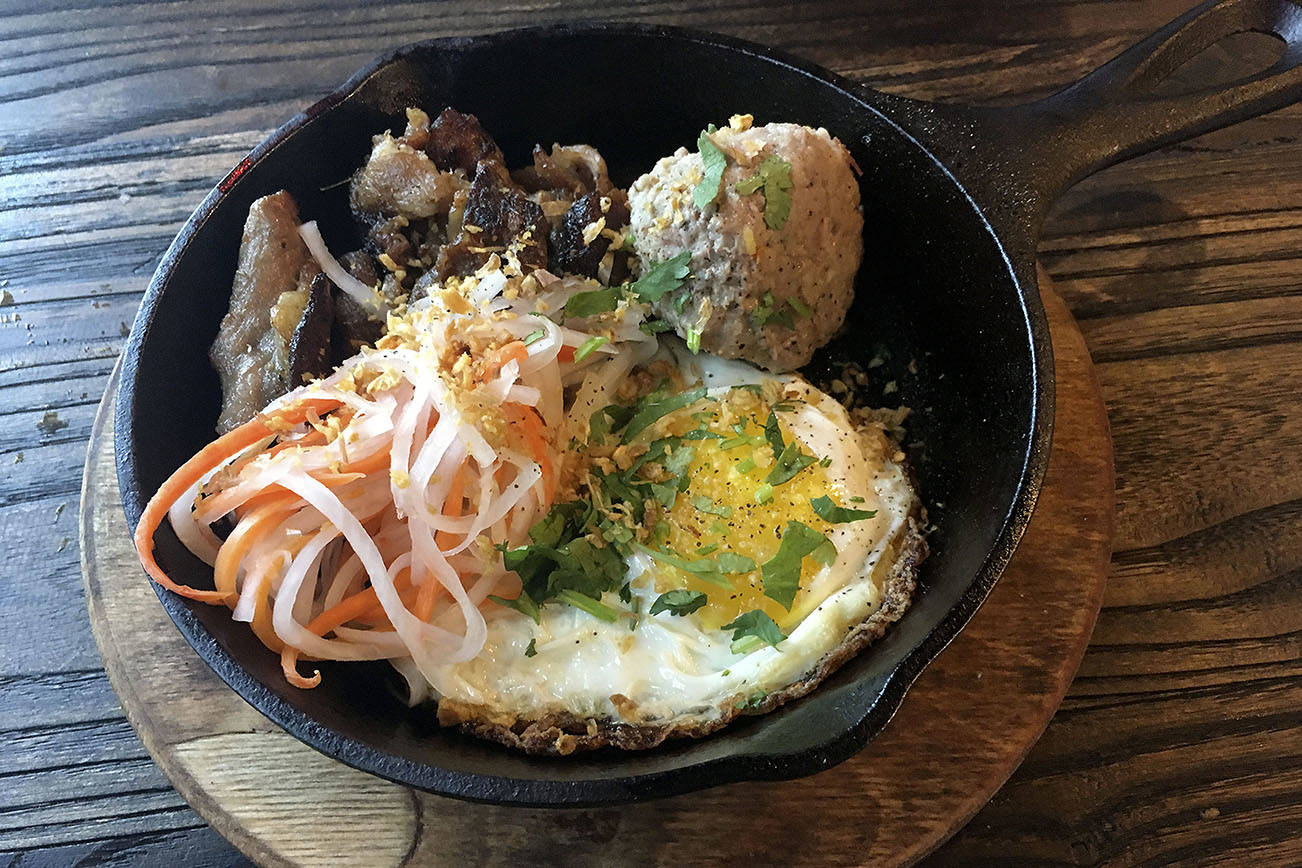Is the seventh time the charm? In the case of the Loveless Building—the historic, medieval-looking spot tucked away on Roy Street across from the former Harvard Theater—let’s hope so. It was built as a place for Seattle artists to live and work, but soon became a home for restaurant after restaurant. Its latest inhabitant, Cook Weaver (806 E. Roy St., 324-0599), deserves to stay.
Like those before it, Cook Weaver has opted to keep the original painted mural that occupies all the walls and illustrates Pushkin’s poem “The Tale of Tsar Saltan.” As in the fairy tale, where a prince must choose a wife from among three sisters, I felt some pressure deciding what to order from the intriguing menu, billed as “Inauthentic Eurasian Food + Drink” but heavy on the Korean and Southeast Asian influences. While this culinary trend may feel ubiquitous, Cook Weaver manages to really up the ante, with dishes that utilize flavors in novel ways. Take the snack of beer-battered nori dumplings: While I pictured a dumpling wrapped in nori, it was in fact stuffed with the seaweed instead. The first bite was slightly off-putting, the intensity of that briny flavor immediately charging your palate. But a couple more bites in, and I was sold. It’s plated with kimchi and, again surprisingly, tahini. Somehow it works, with the tahini mellowing things a bit.
Moving on to small plates—which, take note, are hardly small and an excellent value from $12 to $16—the fava bean and barley salad is hearty yet fresh, served with a sizable dollop of farmer’s cheese, a black sesame cracker, and a sweet, acidic carrot vinaigrette. It’s the kind of salad I’d proudly bring to a potluck picnic and enjoy copious praise. Ditto with the coconut poached-chicken salad, smartly served over red coleslaw, strewn with fried peanuts, and topped with crispy fried shallots. The coconut is not at all sweet; this is a beautiful, savory balance of flavors, taken one step further with the addition of a few drops of black-pepper oil to add a bit of funk. Also from this part of the menu, who can resist a dish called crab seasoning fried chicken? Chunks of chicken and Chinese celery are fried tempura-style and seasoned with a housemade curry spice that is all umami, and comes with an addictive blast of hot sauce on the side, made with habanero peppers and dried pineapple. My only beef? Some of the pieces weren’t entirely fried properly and veered toward soggy.
Though we were stuffed, we soldiered on to larger plates, and were dazzled by the braised brisket with hominy, reminiscent of bibimbap, the Korean dish of warm rice with veggies, meat, a fried egg, and gochujang (chili paste). Here, a boulder of braised brisket is nearly black in its crisped-skin glory and served with a fried egg, fried bites of hominy, and ribbons of butternut squash sauced with miso. Also available for your blending pleasure: more of that addictive hot sauce, here with a spoonful of mustard seed on top. To counterbalance the rich fattiness of that plate, we also went with the sizzling barley with spot prawns, which is a kind of inspired take on Spanish paella. It arrives in a clay bowl, the fried shrimp heads laid over the top, tender leaves of pea shoots peeking out here and there. The bodies of the crustaceans—four hefty ones—remind you why spot prawns are so sought after; they’re the sweet candy of shrimp. Not entirely guileless, though some smoky bacon lardons complete the dish and add a sumptuousness to the barley.
With lots of leftovers boxed to take home, it seemed perverse to even consider dessert, but I was not going to be held responsible for turning down the “gooey caramel cake” with red-wine cherry sauce and cream cheese—one of the best desserts I’ve had in some time. The cake is dense with a nutty texture (it’s made from sunflower seeds) and is coated in a rich, just-sweet-enough caramel sauce. The dark, red-wine-soaked cherries, compote-like, come on the side, as does a canelé of cream cheese. Load a little bit of everything onto your fork, then stare at your dining partner in wonder (or shame) that you managed to eat every last bite.
Here’s the thing: I’m worried about this restaurant. While it’s literally just around the corner from bustling Broadway on Capitol Hill, the little hidden corner it claims doesn’t get much foot traffic, particularly now that the movie theater is gone. It doesn’t help that from the outside it resembles a church or perhaps a medieval museum. On a Friday night it wasn’t even half filled. But with its excellent, spirited food, an historic ambiance that the city is losing more of every day, and a staff who truly cares about every last detail of your meal, seek it out. It’s old and new Seattle in the very best—and most delicious—way.
food@seattleweekly.com
